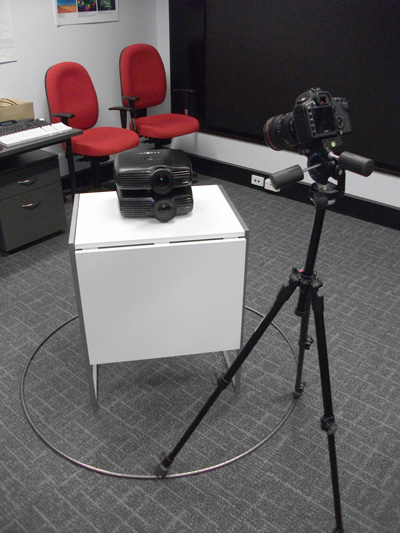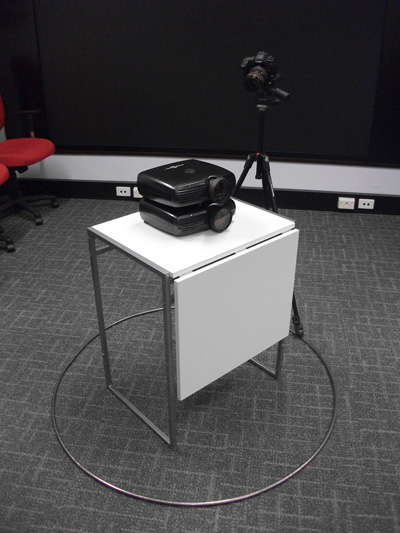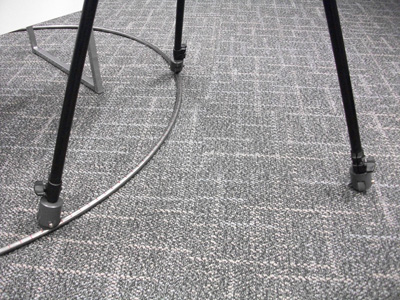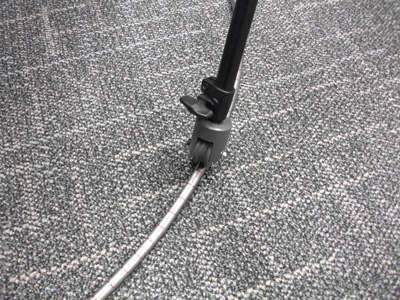QuickTime VR Object captureWritten by Paul BourkeMay 2010
The following is a first pass at capturing QTVR objects. The difference and complexity here is that the objects in question cannot be placed on a turntable, the usual method for capturing QTVR object movies. Initial test set-up
Note the subject matter (a stacked pair of data projectors) is artificial, but chosen to be about the same size of the intended instruments and black, again a prevalent colour of the intended objects.
Test QTVR Objects
This first example is rather large, each frame is 3000 pixel wide but it does therefore allow a decent range of zooming to see the finer detail. There are 95 frames and in this examples there is only one row captured but the option exists to mount the camera at different heights. Note that the room is visible so one gets the clear impression of spinning around the room rather than rotating the object. The sense of rotating the object can be achieved by using a green (say) screen opposite the camera and on the table, this will allow the background to be removed. 
This second test is a lean version with frame sizes of 800 pixels. 
User interface
The user navigation for Mac OS-X is given below, differences for MSWindows is given in brackets.
Improvements required for version 2
|



